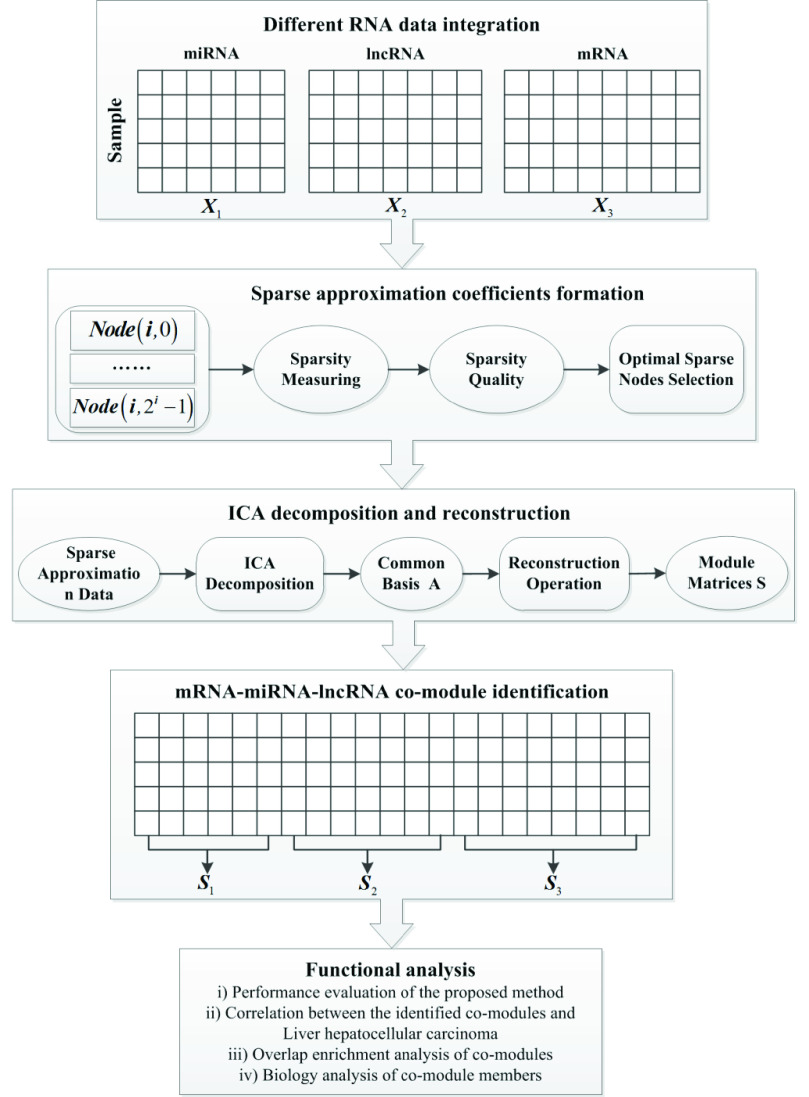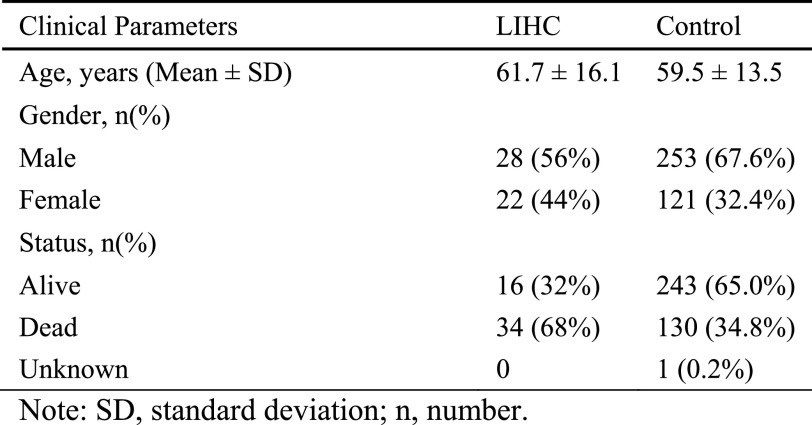Sparse Independence Component Analysis for Competitive Endogenous RNA Co-Module Identification in Liver Hepatocellular Carcinoma
IF 3.7
3区 医学
Q2 ENGINEERING, BIOMEDICAL
IEEE Journal of Translational Engineering in Health and Medicine-Jtehm
Pub Date : 2023-06-07
DOI:10.1109/JTEHM.2023.3283519
引用次数: 0
Abstract
Objective: Long non-coding RNAs (lncRNAs) have been shown to be associated with the pathogenesis of different kinds of diseases and play important roles in various biological processes. Although numerous lncRNAs have been found, the functions of most lncRNAs and physiological/pathological significance are still in its infancy. Meanwhile, their expression patterns and regulation mechanisms are also far from being fully understood. Methods: In order to reveal functional lncRNAs and identify the key lncRNAs, we develop a new sparse independence component analysis (ICA) method to identify lncRNA-mRNA-miRNA expression co-modules based on the competitive endogenous RNA (ceRNA) theory using the sample-matched lncRNA, mRNA and miRNA expression profiles. The expression data of the three RNA combined together is approximated sparsely to obtain the corresponding sparsity coefficient, and then it is decomposed by using ICA constraint optimization to obtain the common basis and modules. Subsequently, affine propagation clustering is used to perform cluster analysis on the common basis under multiple running conditions to obtain the co-modules for the selection of different RNA elements. Results: We applied sparse ICA to Liver Hepatocellular Carcinoma (LIHC) dataset and the experiment results demonstrate that the proposed sparse ICA method can effectively discover biologically functional expression common modules. Conclusion: It may provide insights into the function of lncRNAs and molecular mechanism of LIHC. Clinical and Translational Impact Statement–The results on LIHC dataset demonstrate that the proposed sparse ICA method can effectively discover biologically functional expression common modules, which may provide insights into the function of IncRNAs and molecular mechanism of LIHC.



肝细胞癌竞争性内源性RNA共模块鉴定的稀疏独立成分分析。
目的:长非编码RNA(lncRNA)已被证明与不同类型疾病的发病机制有关,并在各种生物学过程中发挥重要作用。尽管已经发现了许多lncRNA,但大多数lncRNA的功能和生理/病理意义仍处于初级阶段。同时,它们的表达模式和调控机制也远未被完全理解。方法:为了揭示功能性lncRNA并鉴定关键lncRNA,我们基于竞争内源性RNA(ceRNA)理论,利用样本匹配的lncRNA、mRNA和miRNA表达谱,开发了一种新的稀疏独立成分分析(ICA)方法来鉴定lncRNA-mRNA-miRNA表达共模块。将三种RNA组合在一起的表达数据稀疏地近似,以获得相应的稀疏系数,然后使用ICA约束优化对其进行分解,以获得共同的基础和模块。随后,使用仿射传播聚类在多个运行条件下共同进行聚类分析,以获得用于选择不同RNA元素的协同模块。结果:我们将稀疏ICA应用于肝细胞癌(LIHC)数据集,实验结果表明,所提出的稀疏ICA方法可以有效地发现生物功能表达的公共模块。结论:这可能为深入了解lncRNA的功能和LIHC的分子机制提供依据。临床和翻译影响声明在LIHC数据集上的结果表明,所提出的稀疏ICA方法可以有效地发现生物功能表达的共同模块,这可能为深入了解IncRNA的功能和LIHC的分子机制提供信息。
本文章由计算机程序翻译,如有差异,请以英文原文为准。
求助全文
约1分钟内获得全文
求助全文
来源期刊

IEEE Journal of Translational Engineering in Health and Medicine-Jtehm
Engineering-Biomedical Engineering
CiteScore
7.40
自引率
2.90%
发文量
65
审稿时长
27 weeks
期刊介绍:
The IEEE Journal of Translational Engineering in Health and Medicine is an open access product that bridges the engineering and clinical worlds, focusing on detailed descriptions of advanced technical solutions to a clinical need along with clinical results and healthcare relevance. The journal provides a platform for state-of-the-art technology directions in the interdisciplinary field of biomedical engineering, embracing engineering, life sciences and medicine. A unique aspect of the journal is its ability to foster a collaboration between physicians and engineers for presenting broad and compelling real world technological and engineering solutions that can be implemented in the interest of improving quality of patient care and treatment outcomes, thereby reducing costs and improving efficiency. The journal provides an active forum for clinical research and relevant state-of the-art technology for members of all the IEEE societies that have an interest in biomedical engineering as well as reaching out directly to physicians and the medical community through the American Medical Association (AMA) and other clinical societies. The scope of the journal includes, but is not limited, to topics on: Medical devices, healthcare delivery systems, global healthcare initiatives, and ICT based services; Technological relevance to healthcare cost reduction; Technology affecting healthcare management, decision-making, and policy; Advanced technical work that is applied to solving specific clinical needs.
 求助内容:
求助内容: 应助结果提醒方式:
应助结果提醒方式:


